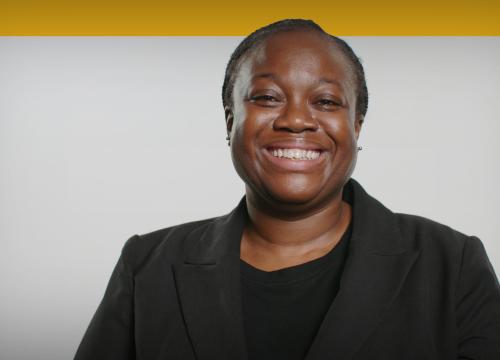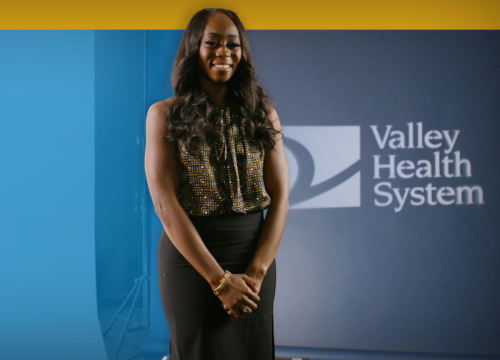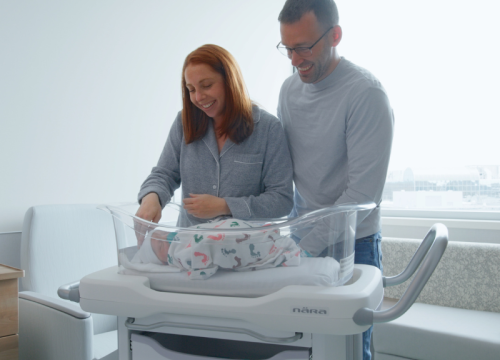Valley's Fibroid Center offers non-surgical and surgical options to treat women with fibroids, including the latest minimally invasive techniques.
Fibroids, also known as leiomyomas, are benign, smooth muscle tumors. They start microscopically and continue to grow. These balls of muscle tissue can range from pea to melon-sized.
Fibroids are very common. About 35 million women develop fibroids by age 50, and 7 million women suffer from fibroid-related symptoms in the United States. They mainly affect pre- and peri-menopausal women and commonly occur between ages 40 and 50.
What Causes Fibroids?
It is not exactly known what causes fibroids. They begin microscopically as one muscle cell which then multiplies over and over to form a small muscle mass that can continue to grow. There are some risk factors that can contribute to the development of fibroids. This includes increasing evidence for Vitamin D deficiency, genetic factors, hormonally responsive factors, obesity, and diet (red meat and alcohol). African American women also have a higher rate of fibroids with a younger age of onset and a higher degree of anemia associated with heavy menses.
What are the Symptoms of Fibroids?
For many women, fibroids do not cause any symptoms. For others, changes in their period, such as excessively heavy periods, prolonged periods, and irregular or more frequent periods, could be a result of fibroids. In severe cases, women can develop anemia from heavy bleeding and even need a blood transfusion. Some women also experience pelvic pressure and pain, including cramps with a period, pain with sex, problems with urination, and constipation. Very large fibroids may put pressure on other organs, causing kidney damage or blood clots.
How are Fibroids Diagnosed?
- Pelvic exam by a doctor
- Pelvic sonogram (ultrasound) either abdominal or transvaginal
- Saline sonogram
- Hysterosalpingogram (x-ray dye test)
- CT scan or pelvic MRI
Depending on the patient, other testing may be needed. If symptoms include heavy periods, blood work may be needed to check for anemia, iron levels, and thyroid function. Some patients may need an endometrial biopsy to rule out precancer or cancer of the lining of the uterus. Women with risk factors for endometrial cancer, including being over the age of 45, high blood pressure, diabetes, family history of cancer or PCOS, irregular periods, or history of infertility, may also need an endometrial biopsy.
Are Fibroids Bad/Dangerous for my Health?
It is very rare for fibroids to be cancerous, but in women with rapidly growing fibroids or fibroids continuing to grow after menopause, surgery may be recommended to remove the fibroids and check for cancer. In addition, very large fibroids do not necessarily have any cancerous growth, but they can put pressure on other organs and cause health problems such as kidney damage and blood clots.
Can Fibroids Affect Fertility and Pregnancy?
Small fibroids typically do not pose many fertility and pregnancy risks and may not need to be treated prior to attempting to conceive. However, fibroids can sometimes contribute to fertility problems and may be associated with an increased risk of miscarriage – this depends on how many fibroids there are, their sizes, and their specific location/position within the uterus. Fibroids can also potentially lead to possible complications during pregnancy like the inability to have a vaginal birth, growth restriction of the baby, hemorrhage, pain, problems with the placenta, and preterm labor. It is best to have a consultation with a fibroid expert prior to getting pregnant to determine whether or not treatment is needed.
Fibroid Treatment at Valley
There are numerous ways to treat fibroids, including:
- Watchful waiting (expectant management)
- Medications to treat the symptoms of fibroids and to reduce fibroid size
- Uterine artery embolization (shrink fibroids)
- Fibroid ablation (shrink/dissolve fibroids)
- Myomectomy (surgical removal of fibroid) – this can often be done with minimally invasive surgical techniques
- Hysterectomy (surgical removal of the uterus with the fibroids) – this can be done without removing the ovaries. It is recommended to keep the ovaries in for women under age 65.
















